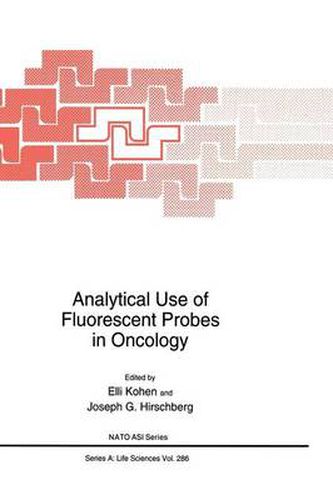Readings Newsletter
Become a Readings Member to make your shopping experience even easier.
Sign in or sign up for free!
You’re not far away from qualifying for FREE standard shipping within Australia
You’ve qualified for FREE standard shipping within Australia
The cart is loading…






This title is printed to order. This book may have been self-published. If so, we cannot guarantee the quality of the content. In the main most books will have gone through the editing process however some may not. We therefore suggest that you be aware of this before ordering this book. If in doubt check either the author or publisher’s details as we are unable to accept any returns unless they are faulty. Please contact us if you have any questions.
Fluorescence is a very powerful tool for work at the frontier of cell biology, photobiology and bioinstrumentation. The stated aim of the workshop was to highlight the significance of fluorescence work for the understanding of cell and tissue physiology, physiopathology and pharmacology, particulary in terms of the analytical use of fluorescent probes in oncology. In the organization of the workshop a multidisciplinary approach was selected. The purpose of the Advanced Research Workshop (ARW) was to bring together researchers in the various disciplines of tissue optics, imaging, microspectrofluorometry and state of the art probes, in order to explore the full benefits that can be derived in biomedicine through the convergence of these approaches. When applied to in vivo and in situ studies, fluorescence and related optical methods enable us to explore within tissues, cells and organelles photon effects previously understood only in solution photochemistry. Processes which can be studied at the molecular level by photophysics, photochemistry and physical chemistry can be evaluated in living tissue by fluorescence spectroscopy and imaging at the intracellular level in terms of structure and function. Thus, fluorescence adds a new dimension to cell biology and physiology. This approach is now supported by a full and versatile, rapidly growing armamentarium of new selective probes for organelles, enzymes, cations, cytoskeleton and metabolic control.
$9.00 standard shipping within Australia
FREE standard shipping within Australia for orders over $100.00
Express & International shipping calculated at checkout
This title is printed to order. This book may have been self-published. If so, we cannot guarantee the quality of the content. In the main most books will have gone through the editing process however some may not. We therefore suggest that you be aware of this before ordering this book. If in doubt check either the author or publisher’s details as we are unable to accept any returns unless they are faulty. Please contact us if you have any questions.
Fluorescence is a very powerful tool for work at the frontier of cell biology, photobiology and bioinstrumentation. The stated aim of the workshop was to highlight the significance of fluorescence work for the understanding of cell and tissue physiology, physiopathology and pharmacology, particulary in terms of the analytical use of fluorescent probes in oncology. In the organization of the workshop a multidisciplinary approach was selected. The purpose of the Advanced Research Workshop (ARW) was to bring together researchers in the various disciplines of tissue optics, imaging, microspectrofluorometry and state of the art probes, in order to explore the full benefits that can be derived in biomedicine through the convergence of these approaches. When applied to in vivo and in situ studies, fluorescence and related optical methods enable us to explore within tissues, cells and organelles photon effects previously understood only in solution photochemistry. Processes which can be studied at the molecular level by photophysics, photochemistry and physical chemistry can be evaluated in living tissue by fluorescence spectroscopy and imaging at the intracellular level in terms of structure and function. Thus, fluorescence adds a new dimension to cell biology and physiology. This approach is now supported by a full and versatile, rapidly growing armamentarium of new selective probes for organelles, enzymes, cations, cytoskeleton and metabolic control.